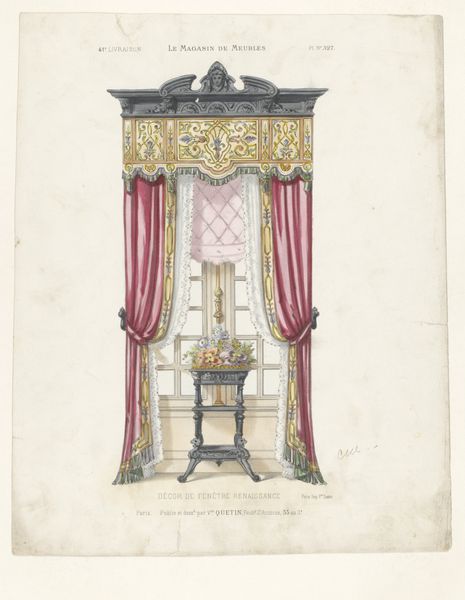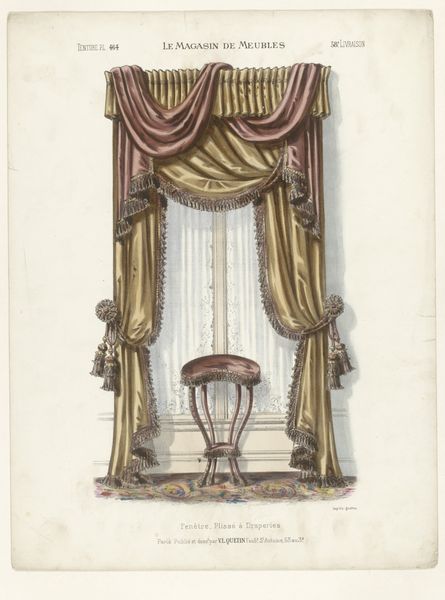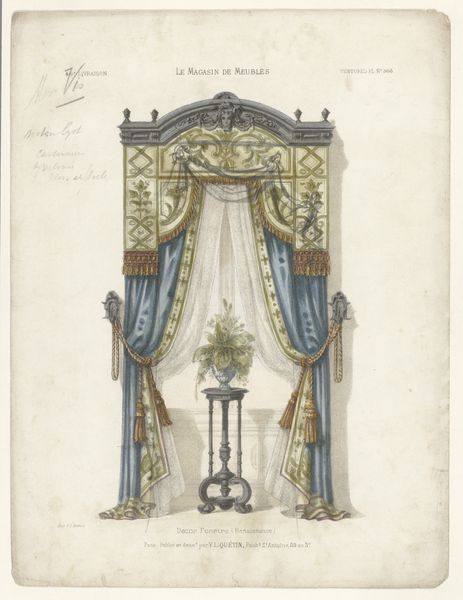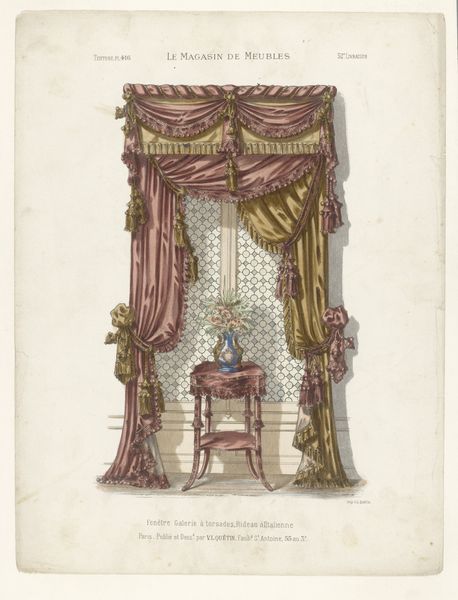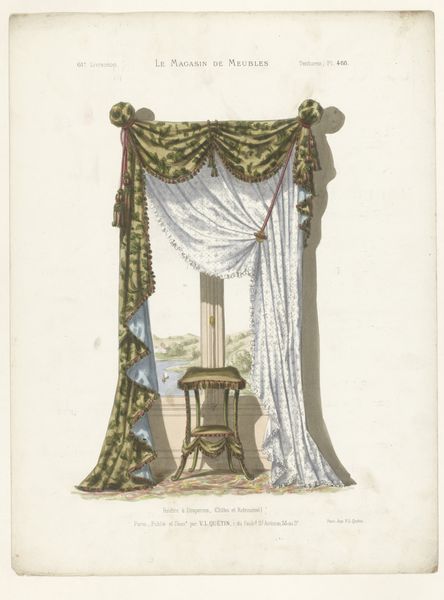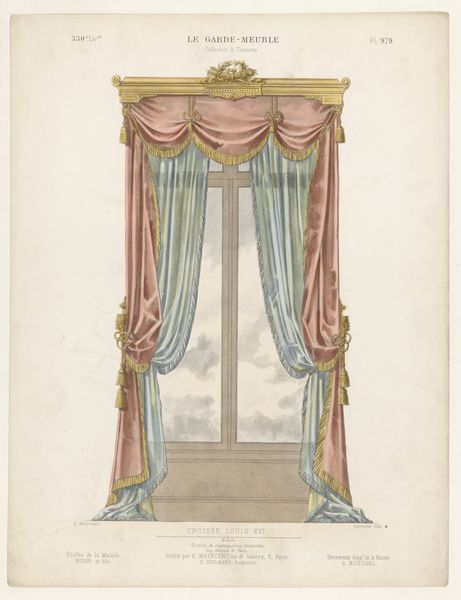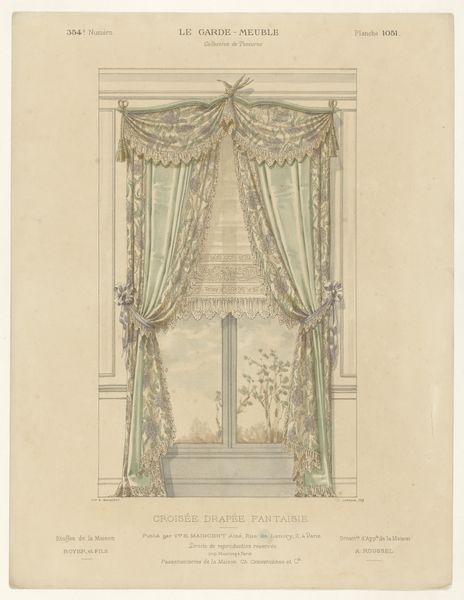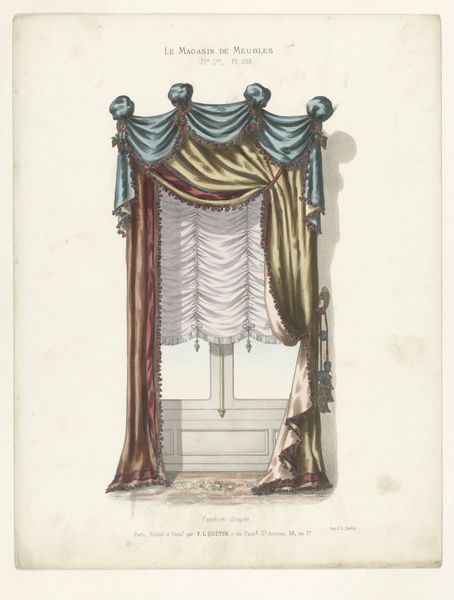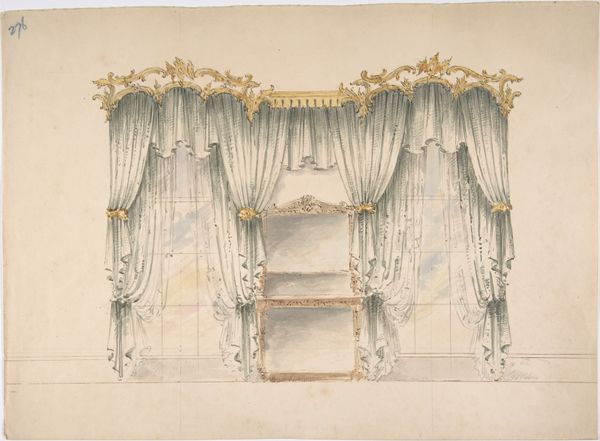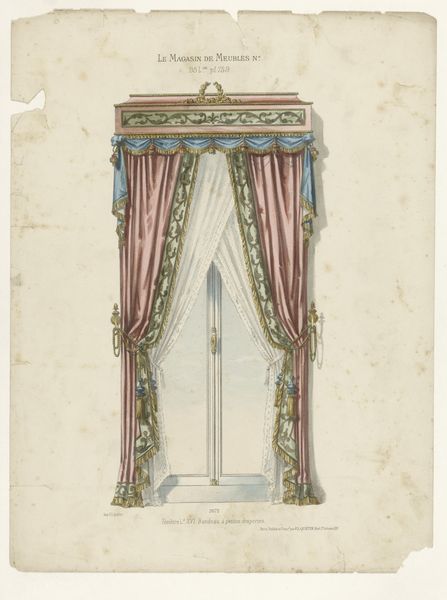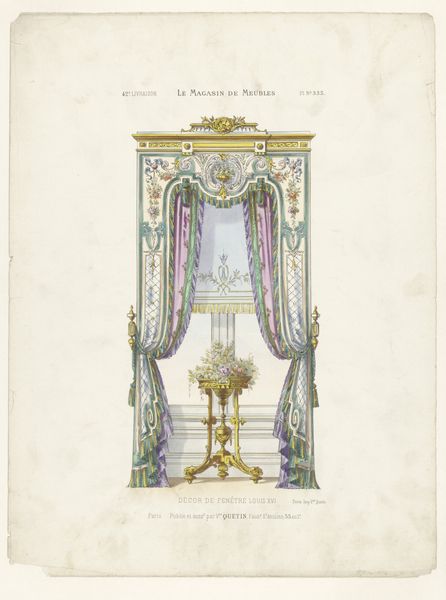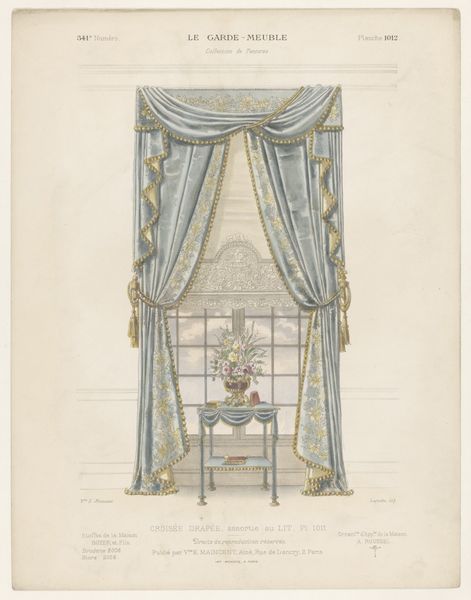
print, watercolor
#
art-nouveau
# print
#
watercolor
#
orientalism
#
decorative-art
#
watercolor
Dimensions: height 358 mm, width 273 mm
Copyright: Rijks Museum: Open Domain
Curator: Here we have Léon Laroche's "Venster met gordijnen," dating from around 1885 to 1895, an exquisite example of decorative art printed in watercolor. The overall impression? Editor: Overwrought, yet captivating. There's a profusion of textures and details. I immediately want to know more about how these window treatments were manufactured. What can you tell me about the making of this print? Curator: Certainly. As a print, we must consider this less about unique creation, and more as a design catalogue of the period. The delicate watercolor suggests it was carefully rendered by skilled artisans aiming to demonstrate an aspirational aesthetic. Note how Laroche utilizes asymmetry and curved lines, which is typical of the Art Nouveau and Orientalist influences. Editor: Precisely! We're not dealing with high art, per se, but a crucial document revealing the period's obsession with ornamentation and a desire for exoticism available, and aspirational, to a broader audience. These textiles would have been produced through a variety of artisanal and increasingly industrial methods. I wonder about the impact such readily available designs had on traditional craftsmanship. Curator: Intriguing. I see it primarily through the lens of formal composition: the placement of the window within the print's frame, the echoing of patterns—even the implied light all contribute to a self-referential, closed visual system. The symbolic weight rests heavily on these curated details, signifying opulence and cultured taste. Editor: I'm thinking about labor—the unseen hands responsible for creating such elaborate fabrics. There's a story here about access, class, and the material culture of consumption. And how these so called “Oriental” textiles were appropriating motifs from other cultures and commodifying it to a Western market. Curator: Undoubtedly. By drawing attention to these features through form, Laroche reveals something about societal ambitions. Although my reading focuses on the artwork's own internal visual grammar. Editor: A good point. Though considering the socioeconomic forces seems imperative in understanding not just what we're seeing but *why* it was made in this fashion, for this specific audience, and reproduced. Thank you for elucidating Laroche’s artwork with your insights; this certainly makes me think about how deeply embedded the manufacturing process and our human endeavors are entwined within artwork interpretation. Curator: Indeed, and likewise, exploring both form and context helps unpack the depth and purpose that decorative works such as this provide.
Comments
No comments
Be the first to comment and join the conversation on the ultimate creative platform.
